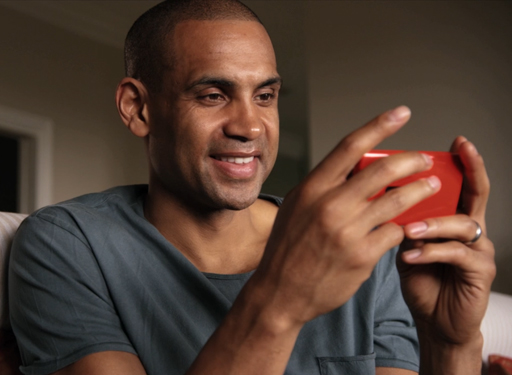For the past two or more months I've seen this outdoor advertisement (a billboard) advertising a phone. It starts out with Meet Gwen... Out of curiosity I wondered if there were any other billboards with personalities.
Today I finally decided to find out. Interestingly, the hot pink billboard 'Meet Gwen' actually means meet Gwen Stefani. That is so cool! I had no idea that the Meet Gwen billboard I saw almost everyday was about Gwen Stefani using the Windows 8 HTC smartphone - which is supposed to be, "centered around you." I thought the ad campaign was just featuring random people who use the Windows smartphone.
 Just in case you don't know who Gwen Stafani is, she is an American singer/songwriter and a fashion designer. No doubt Stefani is a busy woman so with the Windows smartphone I'm sure it's helping her remain connected with family and friends all while getting work done...that is if she is actually using the smartphone she's endorsing. For more on Gwen visit these pages Gwen Stefani Biography.
Just in case you don't know who Gwen Stafani is, she is an American singer/songwriter and a fashion designer. No doubt Stefani is a busy woman so with the Windows smartphone I'm sure it's helping her remain connected with family and friends all while getting work done...that is if she is actually using the smartphone she's endorsing. For more on Gwen visit these pages Gwen Stefani Biography.
Who else is there to meet?
Let's take a quick look at the WindowsPhone site!
GRANT HILL!
 |
| Grant Hill holding the Nokia Lumia 920 |
I didn't know who Grant Hill was until today. Turns out he's a basketball player, but not just any regular street basketball player, he's a NBA All-Star Professional! He currently plays for the Los Angeles Clippers, but he may retire after the 2012-2013 season. For more on Mr. Grant's Professional Basketball Career or Mr. Grant's Bio visit these links.
I had no idea Tamia (whose music I used to listen to) was married to Grant Hill!!
I knew Tamia (rather her music) back when I used to listen to R&B! And they have children!Wow! Anyway, here's a Youtube video showing how Grant and his family use the Lumia 920.
Currently there are nine different Windowsphones. What I like about Microsoft's Windows Phone is the "Live Tiles" interface, although I haven't used one yet I like the idea of having a new kind of interface to work with. For more information on the WindowsPhone visit the last link below and the link titled, The Smartphone Reinvented For You.
Sources:
- Image Meet Gwen [http://cdn.ispot.tv/image/ad/77Jb~1~800.jpg]
- Gwen With Windows Phone [http://www.gadgetfreak.gr/wp-content/uploads/2012/11/Gwen-Stefani-Meet-Her-Windows-Phone-TV-spot.png]
- Grant Hill With Windows Phone [http://cmsresources.windowsphone.com/windowsphone/en-us/home/granthill-video-hero.jpg]
- MSN Fox Sports
- Meet Jessica Image [http://www.bing.com/images/search?q=%2bjessica+alba+windowsphone&FORM=RCIR&adlt=strict#view=detail&id=7570CA158DE4D4CE5BACCAA7A0E375675B65ACB6&selectedIndex=18]




